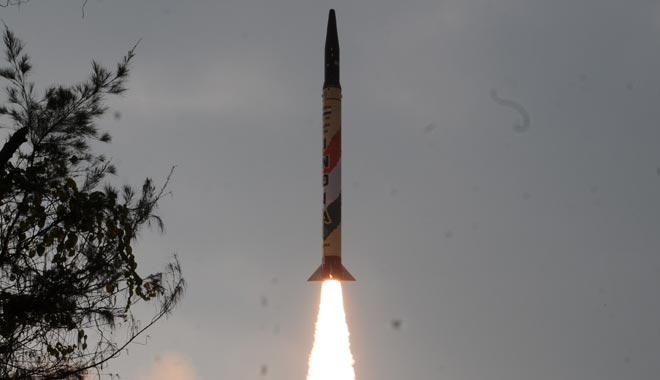
India has successfully carried out a fresh user trial of Agni-III ballistic missile from a defence test facility in the Abdul Kalam Island.
The Strategic Forces Command carried out the test with logistics support from Defence Research Development Organisation (DRDO).
• A ballistic missile is launched directly into the high layers of the earth's atmosphere. It travels well outside the atmosphere and then the warhead detaches and falls back to earth. It follows the path of a ball thrown upwards which falls down. Since it depends on gravity to reach its target, it's called a ballistic missile.
• A cruise missile does exactly what its name says. It cruises, over land or over water. Its working is similar to a jet engine powered airplane. They were developed in the 1930’s and 40’s and first saw action during World War II where the Nazis used the V1 cruise missile. Cruise missiles are either subsonic or supersonic depending on their propulsion and design.
The objective of the test was to re-establish the operational effectiveness of the weapon system. Agni III was inducted into the armed forces in June 2011.
Already several successful tests have been conducted making the missile a foolproof and a proven missile.
Significance
The missile has a two-stage solid propellant system and is capable of re-entering the atmosphere at a very high velocity.
Agni-III is a rail mobile system capable missile and can be launched from various platforms anywhere in the country.
The missile forms the mainstay of India’s nuclear deterrence programme as it provides the strategic second-strike capability.
Agni-III Ballistic
Missile Agni-III is an intermediate range (3,000 km to 5,000 km) missile with two stages.
It is surface-to-surface nuclear capable intermediate-range ballistic missile indigenously developed by DRDO under the Integrated Guided Missile Development Programme (IGMDP).
It is capable of carrying both conventional and nuclear warheads weighing up to 1.5 tonnes.
It is 17 metres tall and weighs about 48 tonnes. The missile has been equipped with the hybrid guidance, navigation and control systems along with an advanced onboard computer.
Strategic Forces Command (SFC)
The SFC is a specially raised missile-handling unit of the Indian Army. It forms part of India’s Nuclear Command Authority (NCA).
It was created on January 4, 2003, by an executive order of Cabinet Committee on Security (CCS) headed by then Prime Minister Atal Bihari Vajpayee.
It is responsible for the management and administration of the country’s tactical and strategic nuclear weapons stockpile. It is headed by a Commander-in-Chief of the rank of Air Marshal.
Abdul Kalam Island
To inspire youngsters to work dedicatedly for the scientific research, the state government of Odisha renamed the Wheeler Island in Bhadrak district as Abdul Kalam Island as a humble tribute to former President Dr APJ Abdul Kalam. Prior to the renaming, the island was named after an English commandant Lieutenant Wheeler.
Current Affairs 29th April, 2017 Current Affairs One Liners 28 April, 2017 Current Affairs Round Up Bullet Points, March, 2017

Join The Discussion